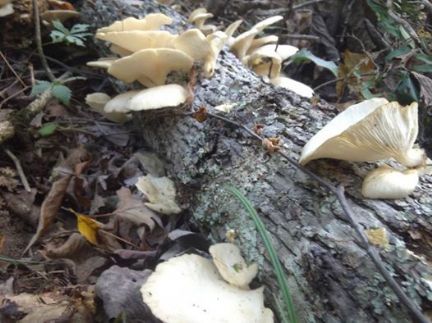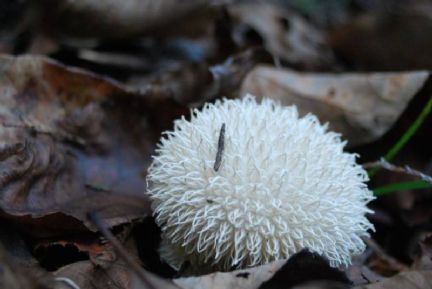Welcome New Sisters! (click for current roster)
Merit Badge Awardees (click for latest awards)
My featured Merit Badge Awardee of the Week is … Kathy Butler-Bebout!!!
Kathy Butler-Bebout (#6691) has received a certificate of achievement in Farm Kitchen for earning a Beginner & Intermediate Level Forage for Food Merit Badge!
“We had an exceptionally wet spring and early summer here, and have seen many more fungi and mushrooms than usual. My husband, the kids, and I spent an hour looking at the Missouri Dept. of Conservation edible mushroom page to confirm that the fungus growing on several dead logs across the creek were edible.
We had success! We correctly identified the fungus as oyster mushrooms.

My main areas for foraging are SurePop Farm, 240 acres, 12 miles S of Yellville, AR, on Water Creek in rugged Ozark Mountain terrain, a few miles N of the Buffalo River; and Sunrise Farm, 40 acres of bottom and upland pasture on Greasy Creek, 7 miles SW of Yellville. Sunrise Farm has been cultivated and foraged for generations. I searched there this spring for morel mushrooms in a small, undisturbed area in a sycamore grove on the bank of Greasy Creek. Morels, happily, are one of the easiest to identify because of their “spongy, Christmas tree” shape, and the area was relatively free from heavy undergrowth, so they were easier to spot under dead leaves and logs. SurePop is remote and barely cultivated. I targeted the elderberry thicket along the creek, the deep ravine full of dead logs from the ’09 ice storm, and the large flat area overgrown with kudzu on the S side of the farm.
I learned that, for me, the only way to forage for fungi in the off-season is to identify areas with conditions conducive to their growth. I checked these areas periodically through spring, summer, and early fall of 2015. I fell in love with fungi! When the weather turned moist and still, an incredible variety of mushrooms, shelf fungi, puffballs, and the like revealed themselves. I can identify elf’s ear (not edible), morel, oyster, delicious milky cap, lion’s mane, and puffballs.”






















































Kathy, your explorations sounds very interesting to me! Once you start carefully looking, there are beautiful fungi growing here and there. Although I never tried to identify edible mushrooms and then eat them, I have collected and catalogued varieties that grew in the woods near my home one year in the late Fall as a teenager. The colors, and shapes are beautiful! Alas, all of mine were poisonous varieties, but that did not stop learning about them. For me, that one experience of collecting and identifying fungi forever opened my eyes and now I always look for them when I am in the wooded areas. Your badge activity sounded like a great family project and one that everyone could enjoy and learn from. Congratulations!!
Kathy, These look great! My hubby is looking with such delight at those mushrooms. We love to mushroom hunt here in the U.P. of Michigan. We just ate more puffballs & were able to freeze them. Now we’re waiting for shaggy mains.